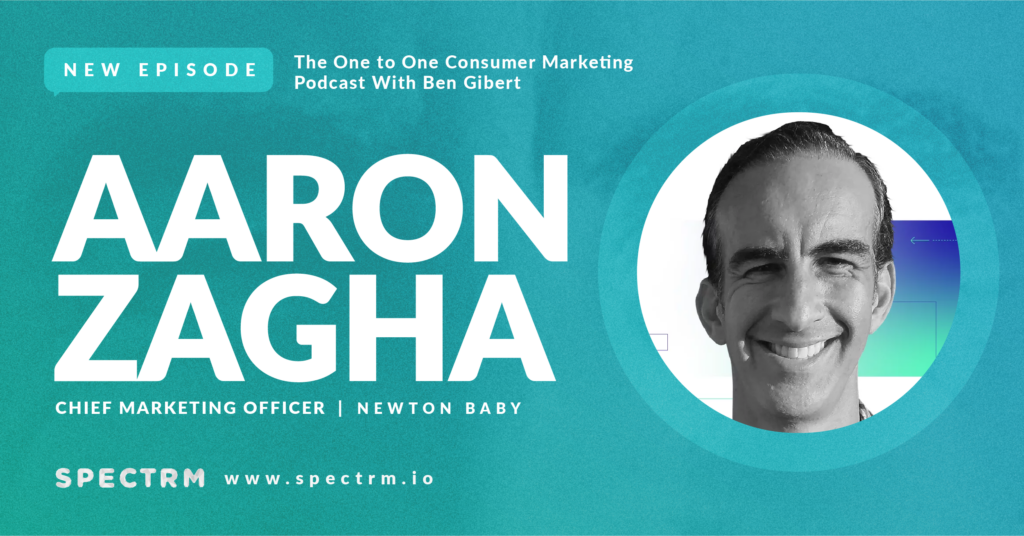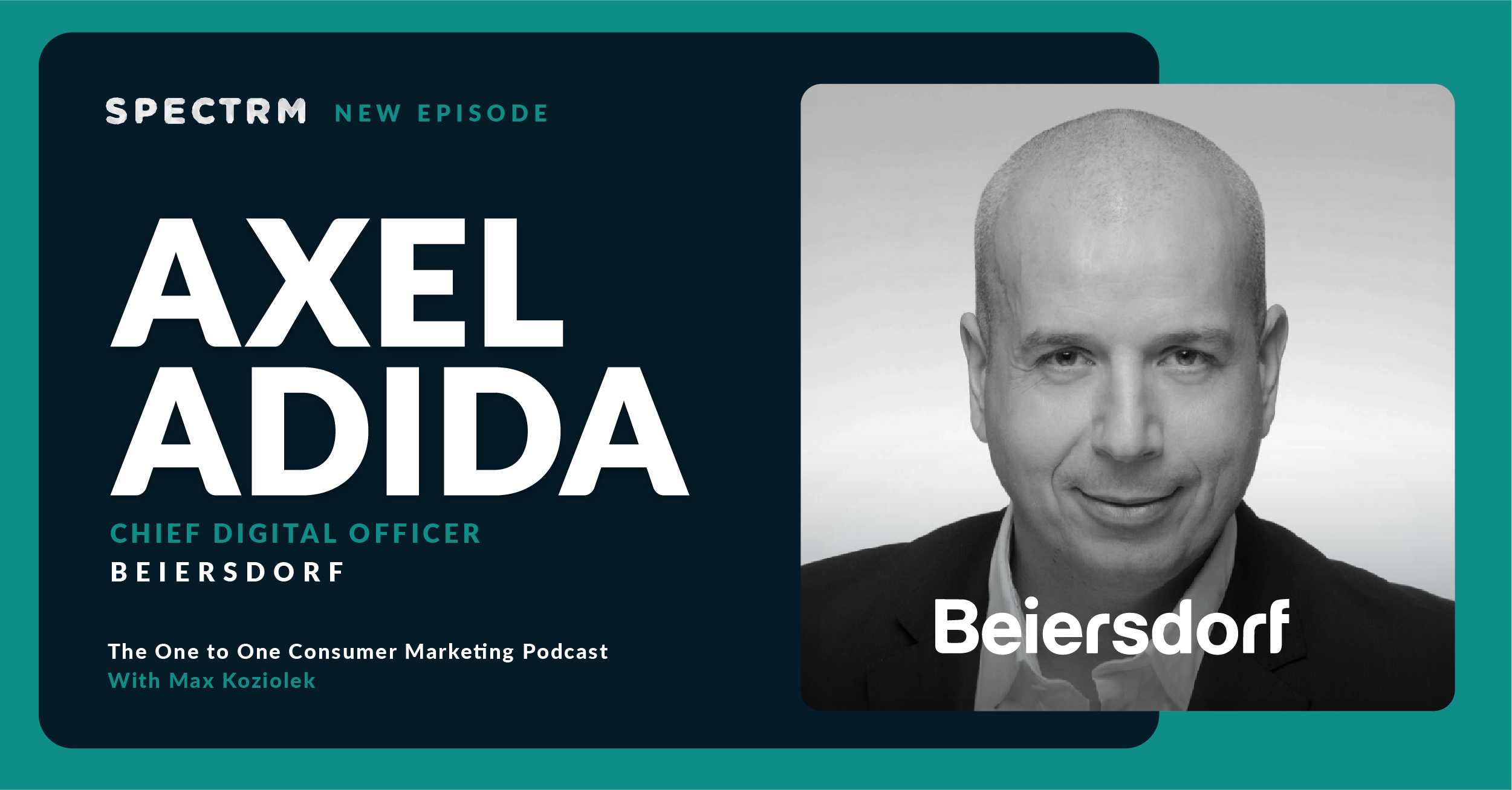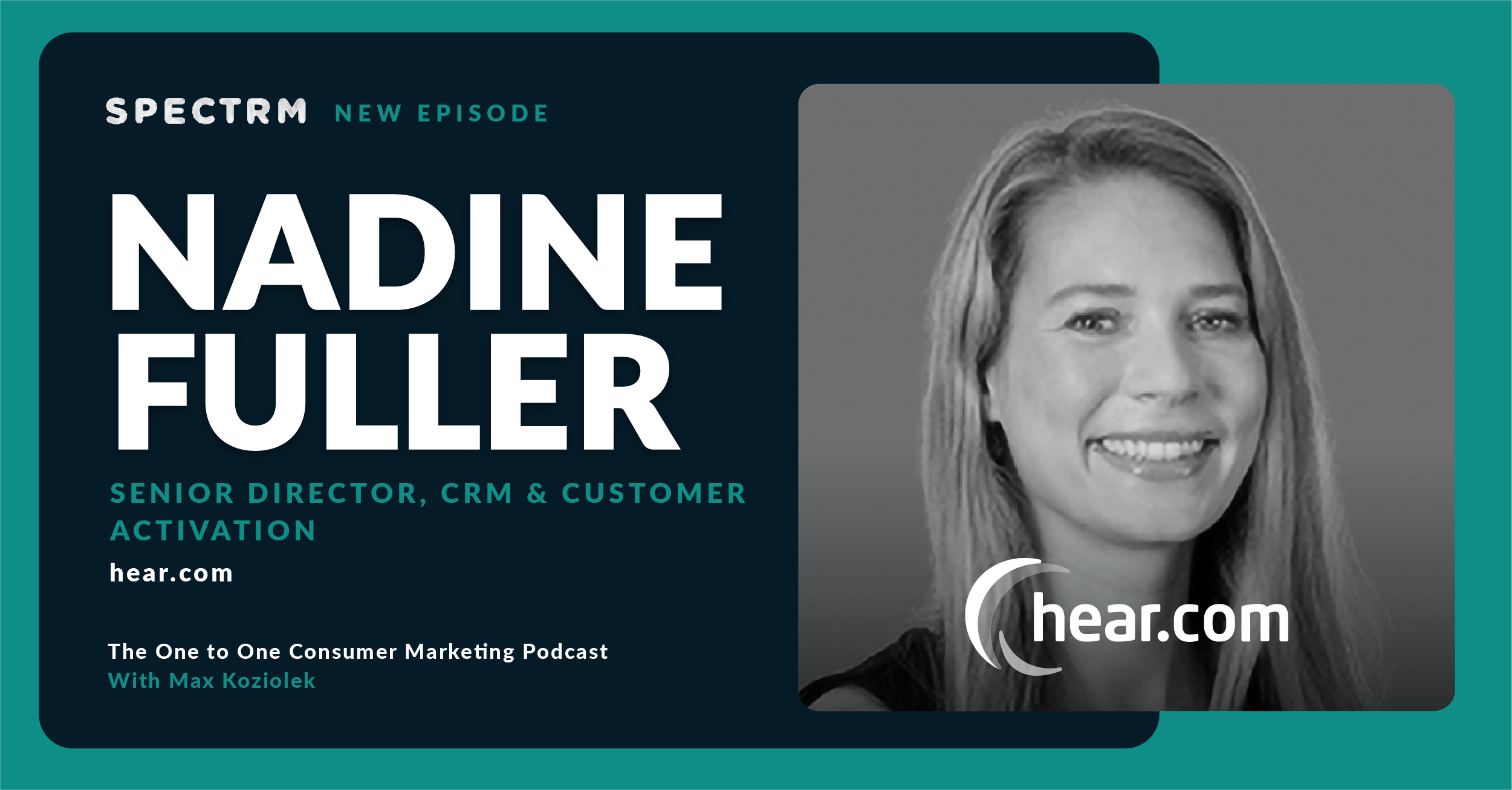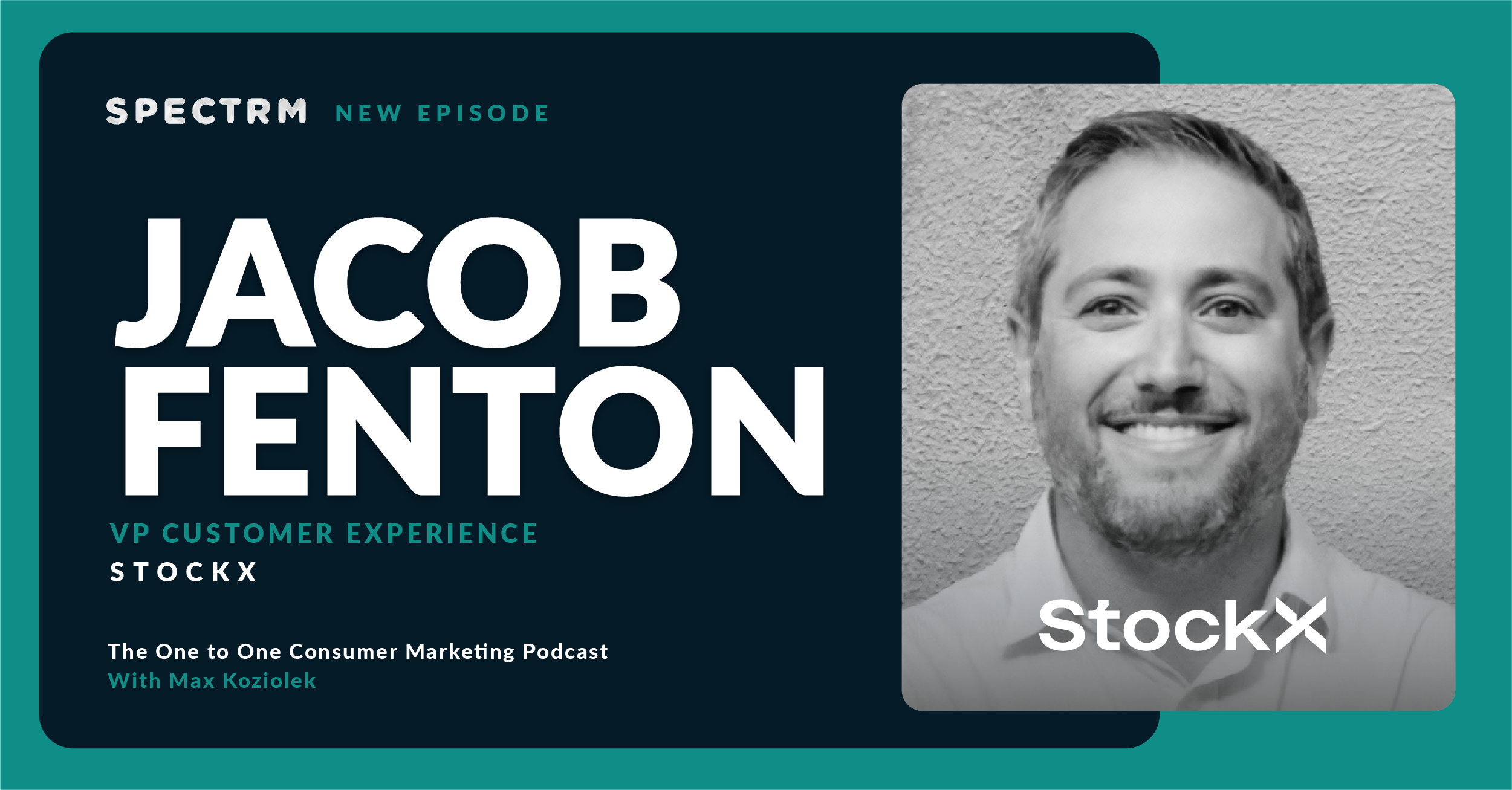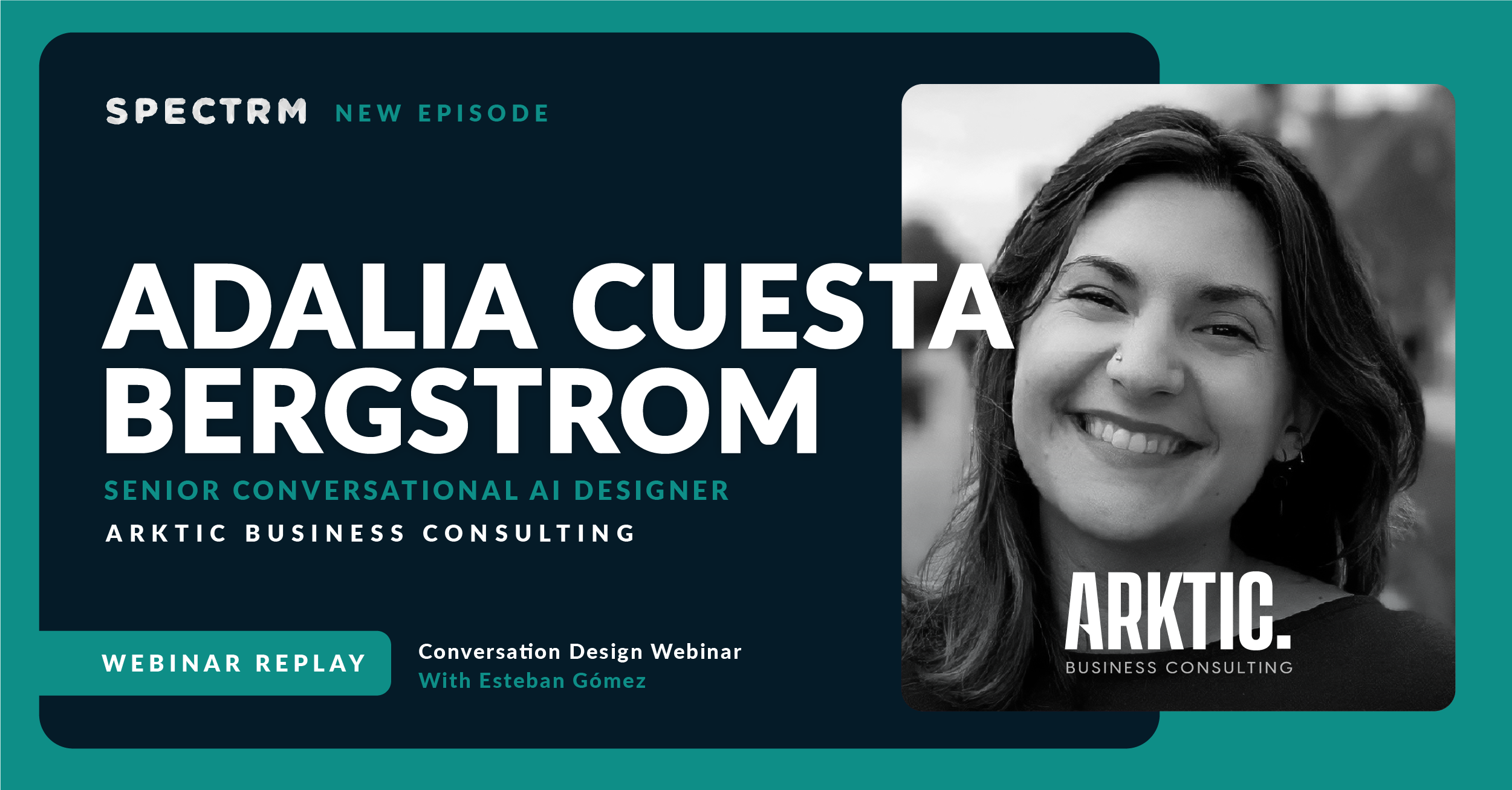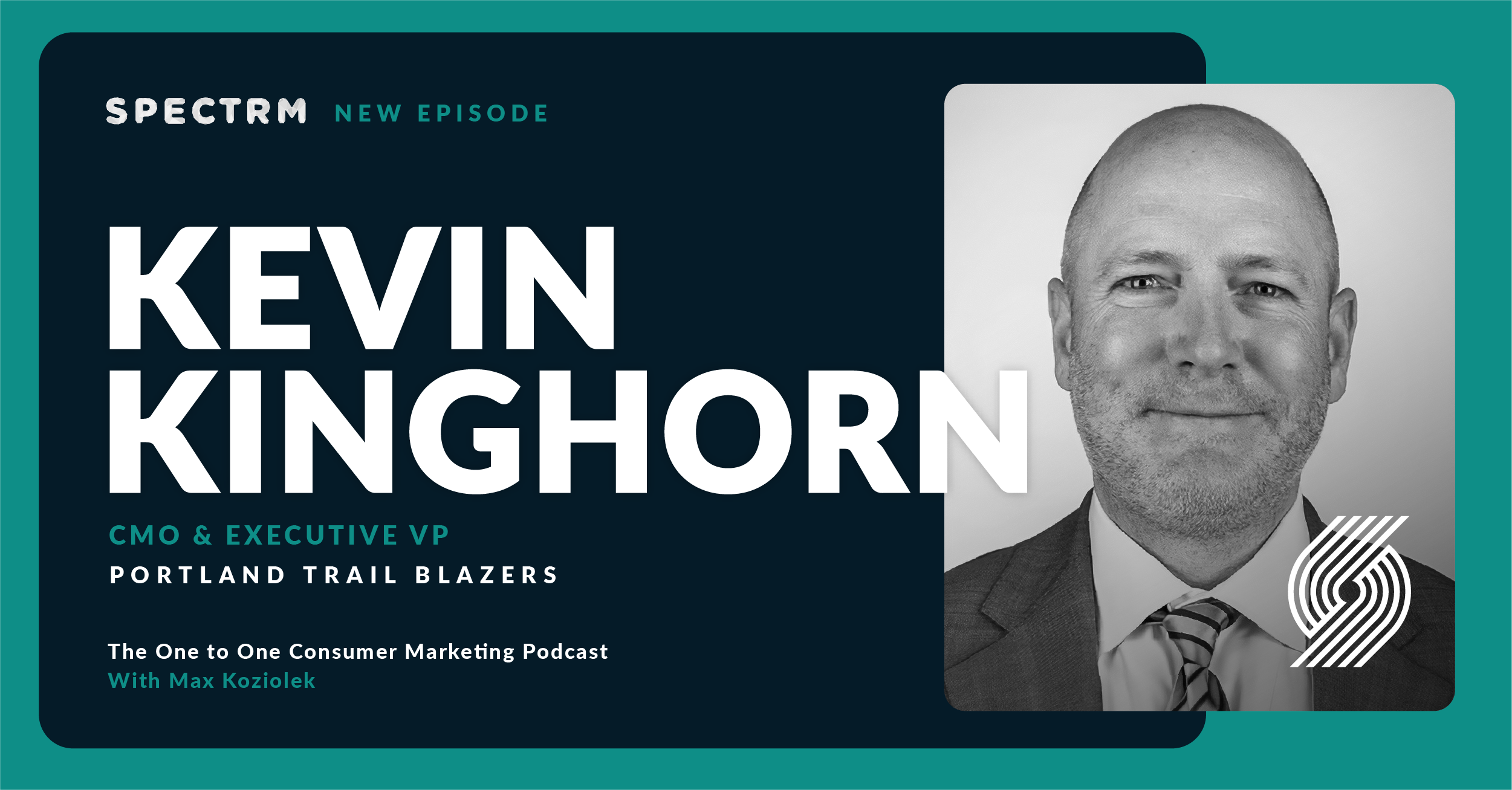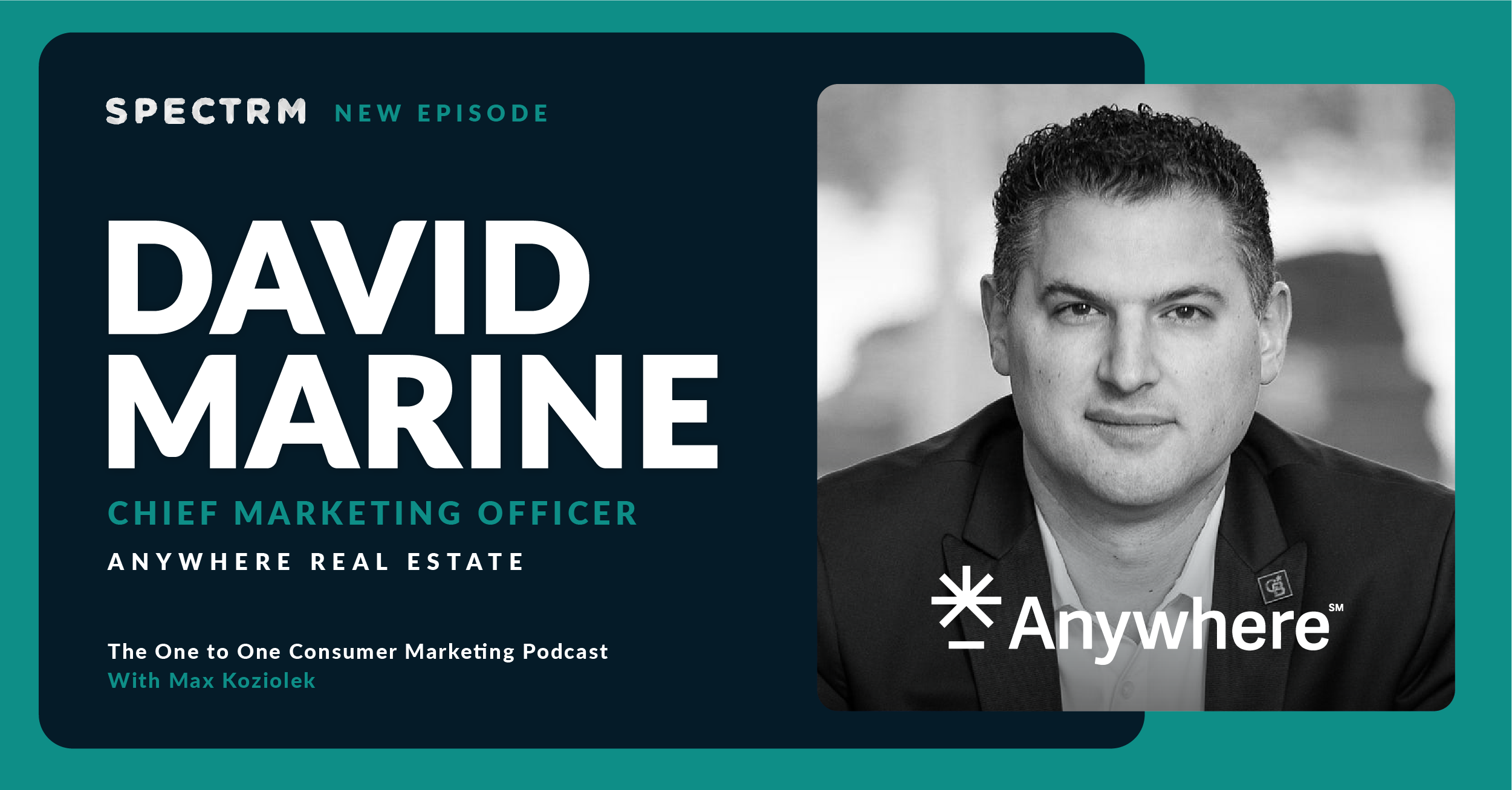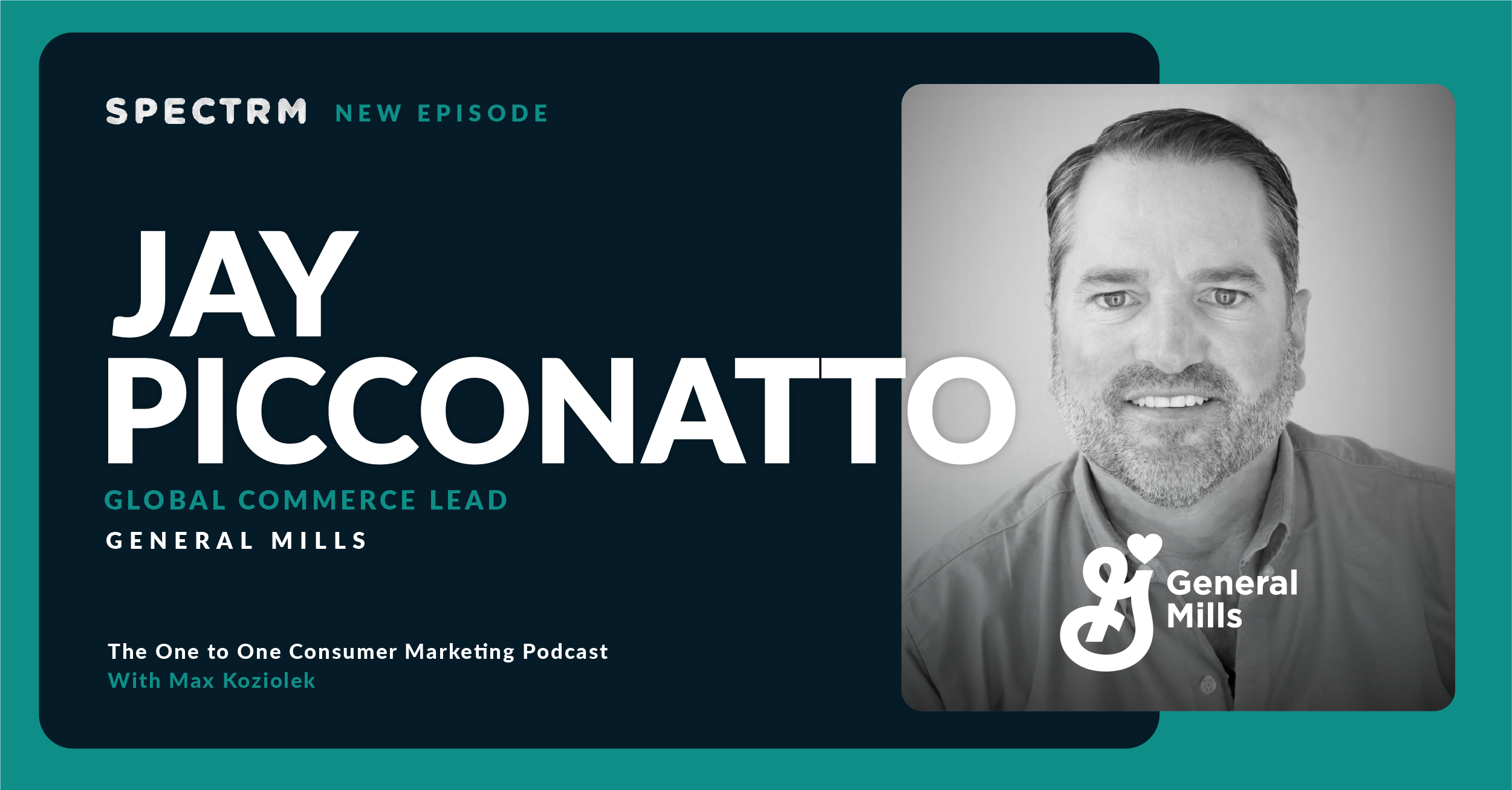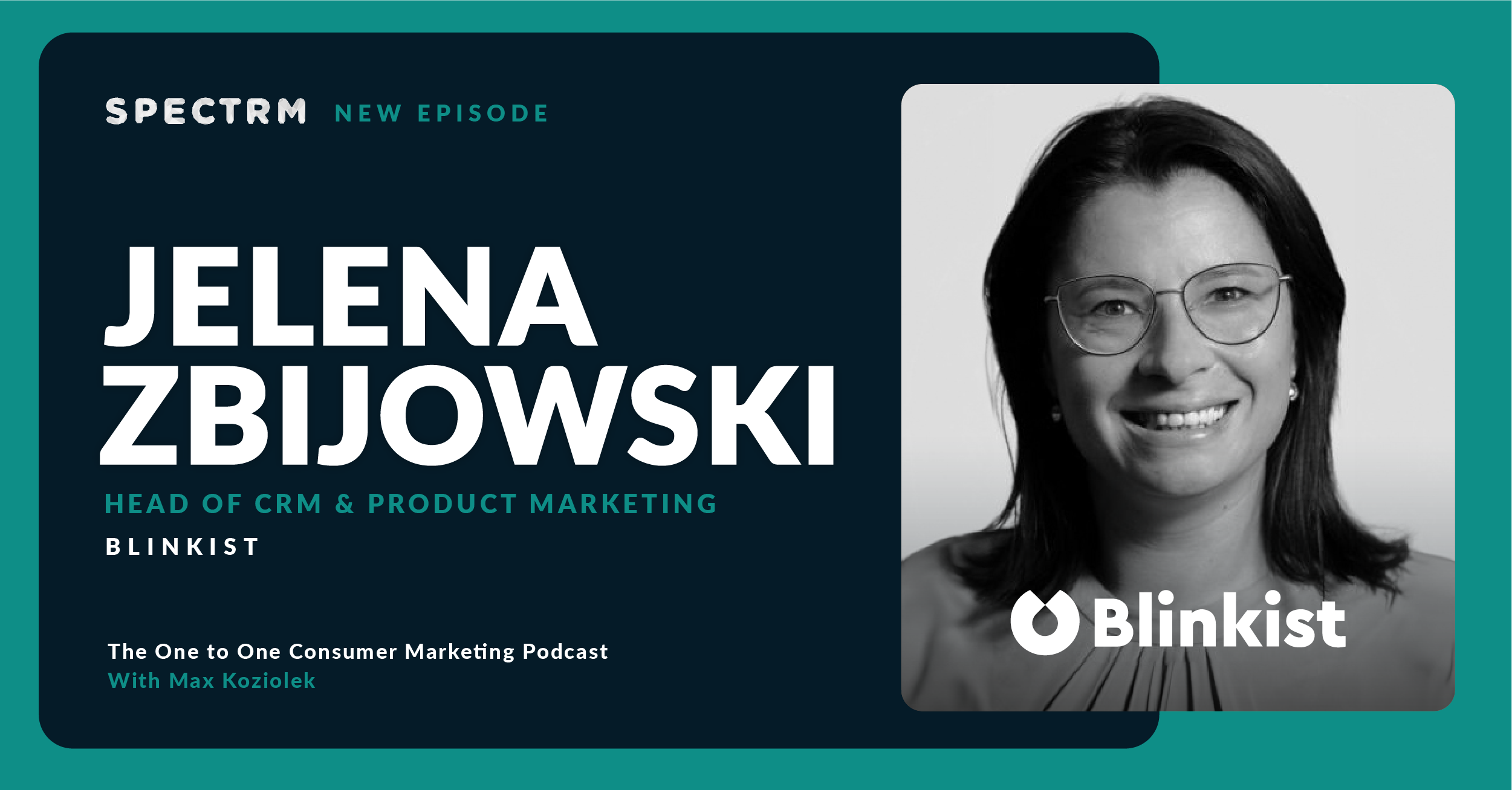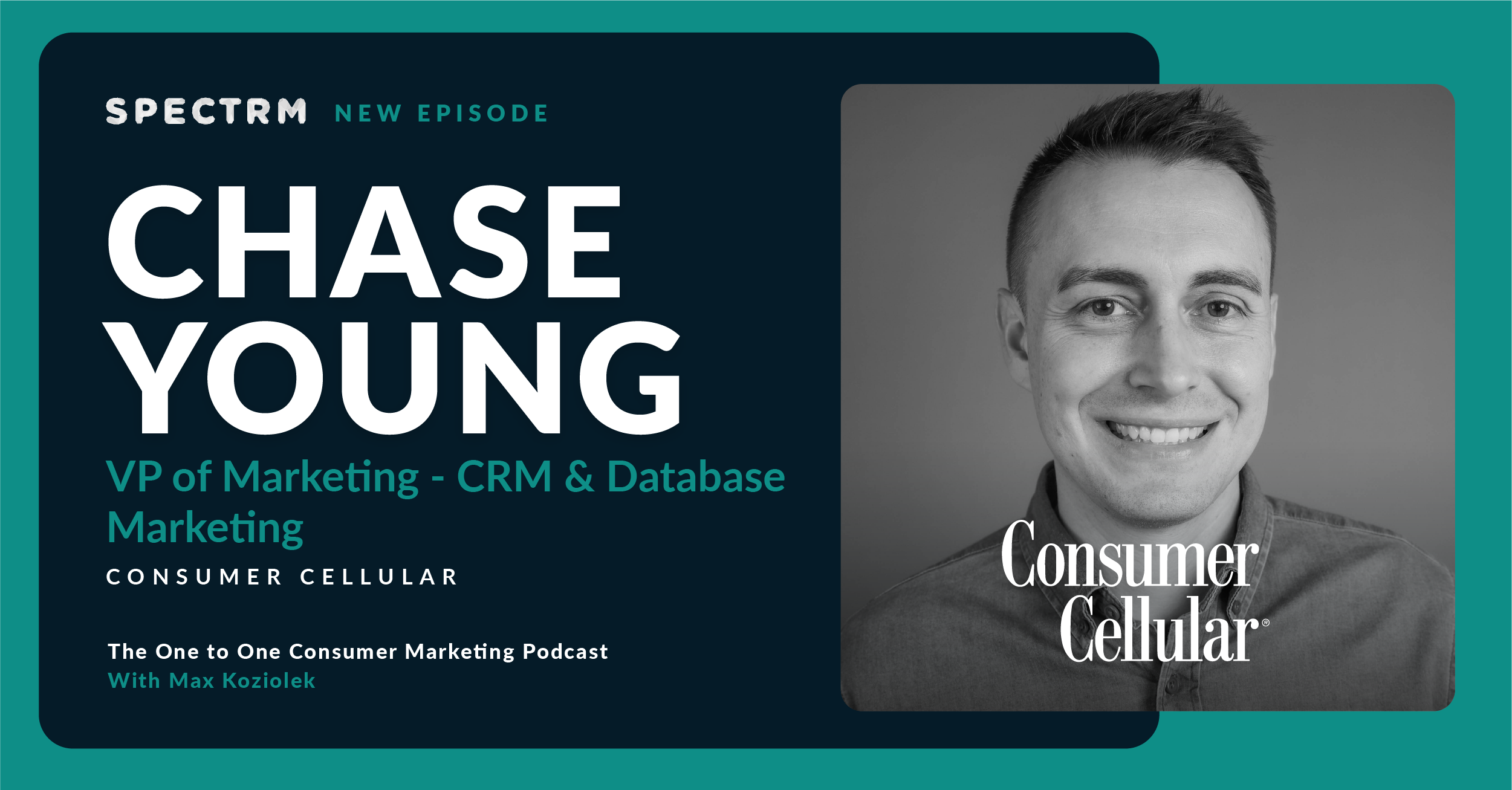Summary
In this episode, Ben speaks to Aaron Zagha, Chief Marketing Officer at Newton Baby. In this episode, Aaron shares why marketing teams are perhaps overly pessimistic today, but can increase their optimism if they focus on driving decisions through data and relying on “gold standards” to continue to engage customers.
Topics discussed
- The current state of marketing today, and how it’s overly pessimistic — and why it shouldn’t be.
- What gold standards in marketing you should focus on to weather industry changes — like asking your customers directly why they purchased — and why consistently turning to data will help you make more informed tactical changes.
- Why Newton Baby doubled down on influencer marketing, and how they use influencers to engage customers and drive sales.
- Which channels are no longer working, and the pivots Newton Baby had to make to ensure they were spending their marketing budget wisely.
- How to tackle personalization at scale, and the effort it takes to do it effectively.
- Advice for marketers who want to improve their efforts, including the importance of learning statistics.
- What current trends, like generative AI, are creating the future of marketing, and why the future of marketing could go anywhere.
I think the initial state of the industry is to overreact and say, 'Oh my god, we're never going to be able to market to anyone ever again in a reasonably positive, ROI positive way.' At the end of day, if you put the right ad in front of the right person — which may be getting a little harder to find that person — it's still doable and it can still be done, and typically things even out, so CPMs will drop and you'll still get a similar ROI — if you're on the ball.
Guest biography

- Specialties: eCommerce, online marketing, strategy, M&A, finance
Company overview
At Newton, we’re on a mission to provide the whole family with safer, healthier, better products for rest and play. Our trusted, top-rated mattresses, sleep accessories and more make us a favorite for babies, kids, parents and pups alike.
Industry: manufacturing | www.newtonbaby.com
Subscribe to the podcast newsletter
Transcript
00:00
Welcome to One to One: The Conversational Marketing podcast dedicated to helping modern marketing teams succeed in a messaging first and privacy first world. In each episode, we’ll interview a marketer who is winning with conversational marketing to distill best practices, lessons learned, and actionable takeaways. Here’s your host, Ben Gibert, VP of Marketing, Spectrm.
00:32
Ben Gibert
Hey, everyone, and thanks for listening to One to One: The Conversational Marketing podcast. Today I’m speaking with Aaron Zagha, Chief Marketing Officer at Newton Baby. Aaron, thanks for chatting with me today.
00:43
Aaron Zagha
Pleasure. Good to meet you.
00:44
Ben Gibert
Yeah, I know it’s a new year. It’s always interesting to see what challenges that brings. I’m really excited for our conversation today in particular and how you’re seeing marketing evolve and what you have planned for this year. Before we get started, can you tell us more about yourself, your background and how you ended up in your current role at Newton Baby?
01:05
Aaron Zagha
Yeah, I have a kind of atypical background. The first half of my career was actually investment banking. It’s just kind of what I did out of school. I didn’t really know what I wanted to do, but I wanted to start a company. Didn’t have a good idea, so that’s just what I did. But I quit. After a year and a half to start a company, it failed pretty spectacularly. We were kind of pivoted through another startup, which was actually in tech, and it was a super early kind of live shopping, social, ecommerce company, but way ahead of its time. That began the pivot of my career solidly into ecommerce. My first kind of bigger role was running international business, first Teleflow, the big online flower company. I ended up in my current role at Newton Baby about four years ago. Yeah, Newton is one of the leading baby brands.
01:54
Aaron Zagha
We make the top selling luxury crib mattress safest products on the market. Babies can literally breathe straight through it. It’s really cool material. It’s like ramen noodles before you put it in water. Building on the success of that product, we’ve recently launched pet beds. So even pets have better beds now. Pregnancy pillows, all kinds of related baby stuff too.
02:14
Ben Gibert
Nice. As someone who recently had a son, I think the prospect I didn’t even know that crib mattresses were a suffocation concern. Hearing you say that, I wish I had known about Newton Baby earlier, I’m sure, yeah, there’s a lot of interesting things in that space from a marketing perspective I’m really excited to dig into today. I have to ask because you brought it up. What was the business that failed spectacularly?
02:40
Aaron Zagha
Yeah, it was this really ugly poster art company. It was a 3D layered poster art, so you would kind of cut out upper layers. Used to be called decoupage. Anyway, we saw it when we were traveling abroad and as 22 year olds do, thought it would make a killing in mass market channels in the US. We didn’t really have an appreciation for how hard it was to sell things and get into the door at Walmart, and it was just ugly. It was just ugly. We didn’t even want to put it in our own 22 year old apartments. Like, I don’t know what we were thinking.
03:11
Ben Gibert
Well, that’s funny. I’m sure you learned a lot from failing hard. I think that’s where most learnings come from. Yeah, I think moving more onto the consumer marketing side, you’re obviously very focused on consumer marketing. I’d imagine new parent and kind of pet owner marketing now at Newton Baby. Can you maybe, before getting into specific things that you’re doing there and the channels and tactics that you see work well, can you maybe summarize how you see the current state of consumer marketing today?
03:42
Aaron Zagha
Yeah, it’s been an interesting journey. With the iOS changes and the privacy changes and everyone freaking out, I think it was fair for some brands to freak out. If you were selling low cost cosmetics and you can really adjust Facebook bids 20 times a day and have that work for you were probably affected pretty hardcore. We have a longer path to purchase, and it requires more customer education. We’re more of a luxury product, kind of the higher end. We didn’t really see much of an impact from the initial iOS changes at all. Granted, measurement got a lot harder, but we didn’t have the issue that a lot of brands did, and the issues came kind of more slowly to us, and they certainly came and our lookalike retargeting audiences shrank. Even through the current changes and email privacy changes, I think the initial state of the industry is to overreact and say, oh my God, we’re never going to be able to market to anyone ever again in a reasonably positive ROI positive way.
04:40
Aaron Zagha
I think that at the end of the day, if you put the right out in front of the right person, which may be getting a little harder to find the right person, whatever, but it’s still doable and it can still be done. Typically things even out and so CPMs will drop and you’ll still get a similar ROI if you’re on the ball. I think that the state of the industry right now is probably overly pessimistic, especially given CPMs are plummeting everywhere right now, which is great.
05:05
Ben Gibert
Yeah, I think we’ve seen, like, there was the initial very strong rising costs all over the place, and then we’ve seen pullbacks. I think it’s that classic ebb and flow too, of people shifting investments. I’ve always liked to think of digital marketing as like an investment portfolio as well, as far as channels are concerned, which I’m sure you probably bring that mindset from your background as well. It’s interesting to see where people are reallocating their resources in today’s market. I’d love to hear more. You mentioned iOS 14, like some of these privacy changes that have affected the measurement side of things and making things difficult. I think a lot of people I speak to have that challenge of the size of their retargeting audiences, the accuracy of the people that they’re targeting. That’s one side of it. You also mentioned that at the end of the day, you have a long path to purchase.
05:54
Ben Gibert
You’re more of a luxury product. There’s a lot of education that goes there. Can you talk to me just about that? Like, how do you deal with that longer path to purchase if the measurement piece doesn’t scare you so much? Because you sound quite optimistic. What makes you optimistic?
06:08
Aaron Zagha
I think the bigger changes for us were how we measured, not whether. The gold standard for us has always been customer service. Just ask your customers, why did you purchase? Where did you see this ad? We do it actually in purchase, but most people call it the post purchase survey. Super important. Again, you’re not going to change bids one ad versus another, given that. You have click-through rates or view engagement rates that haven’t changed. You sell that data in Facebook, for example, so you can still make those tactical changes based on other data. The big budget allocation decisions based on something like a post purchase or the other gold standard for us has always been incrementality. Running incrementality geolift tests somewhere or other. Those are the things that we’ve kind of always relied on. Just I have more of a mathy statistics background than most, probably.
07:00
Aaron Zagha
Everything I do, I want to measure and track and get whatever data I can to kind of echo locate the highest ROI and which channels to lean into when yeah, I think.
07:09
Ben Gibert
That’s a great point. I’ve also heard marketers make more and more — I think in the digital space you have all that data and you can get a little too laser focused on what are you doing with all the data and those small tactical changes you mentioned. Something like the post purchase survey is first principles, the most accurate, relevant kind of information you can get sometimes from your customers directly. Also what stuck in their mind in that long purchase journey, too, of why they came to your site and why they purchased. Am I hearing you right when you’re saying the data and measurement that you’re getting in platforms allows you to kind of make those tactical decisions, re add creative and things like that, but then the bigger strategic decisions are made on that more qualitative insight from your customers?
07:54
Aaron Zagha
Yeah, that’s exactly right. I mean, for sure when it comes to the bigger channels and the bigger chunks of your spend, we run 30 marketing channels at any given point in time, which I’m probably over diversified, to use your investment analogy. Maybe that’s not going to help you on channels that you’re giving 5% of your budget to. They don’t really show up in post purchase surveys as well. You know that they’re really working. We actually let people fill in the blank. Like if they suggest, I bought this because I saw it from an influencer, we let them fill in the blank for the influencer’s name. We run too many influencers to list them all. People want to fill it in. They want to give credit to the person that influenced them. If there’s some micro influencer that’s getting a whole bunch, it shows us that we really need to work with this person, renew her, make sure she posts 100 times more for us, et cetera.
08:45
Aaron Zagha
Even if they’re too small to regularly show up in the post purchase survey in a meaningful way, any big changes can certainly be a flag that says, hey, reduce spend or dramatically increase spend, and the rest has to be done in the dashboard.
09:00
Ben Gibert
Yeah, that makes sense. You mentioned 30 plus channels and do you have 80% in risky assets, 20% in safe assets, like a good investor or what are you? Can you talk to me about your channel mix and what you see work best?
09:14
Aaron Zagha
Yeah, so it took a real big leap of faith at the beginning, but we didn’t do it that way. Before I came on board at Newton, they were running a lot of display and then a lot of paid search in the normal channels. When I came on board, I kind of realized that due to the differentiated product, we really had to tell the story, which can’t be done in a banner ad or a paid search link as much. I leaned into influencer really heavily from day one, which is an influencer is a very risky asset. Like you go buy a Kim Kardashian suite and you’re going to blow up your whole portfolio immediately because that’s going to take your whole budget. It’s not going to work. We found an agency that really specialized in measurement and running it like a performance channel and only working with influencers that kind of had proven their ability to drive revenue.
09:58
Aaron Zagha
We really leaned in and that continues to be our biggest channel. It’s also the hardest channel, but over time we’ve been able to grow the bigger channels to be a more representative piece of we’re better diversified now, but yeah, out of the gate we were not well diversified, but now we are. Influencer, then paid search and then Facebook, Instagram.
10:19
Ben Gibert
Okay, great. When you say the hardest channel, is that just in terms of scaling that just managing those relationships?
10:26
Aaron Zagha
I think every piece of it is the hardest. Ranging from competition for influencers at this point because so few people know how to do it well and the big brands have rushed in and the big CPG companies are in there just paying anything, asking rates, so influencer rates continue to go up, which means all influencer rates go up and so they’re expensive, A. B, it’s the hardest channel to track. I mean, when Instagram was a little more dominant and Instagram stories were a little more dominant, you could track it a little better because you could track link clicks. Now an influencer’s followers, like maybe 10 to 15% of an influencer’s followers even see their content. That just kind of removes a huge connection that you used to have in terms of knowing how many views you would even get of whatever post. Yeah, the measurement is impossible.
11:18
Aaron Zagha
It’s mostly view through at this point, so you really kind of just have to echolocate as well as you can and you also have to be really prescriptive. Tell them exactly what you want them to shoot, how you want them to shoot it, any guidelines, talking points, all that, and then yeah, just the day to day management of making sure they actually post getting the content. If you’re going to spark it or dark post it or whatever else. It’s so manual, so everything about it is the hardest and most risky.
11:45
Ben Gibert
Yeah, that makes sense, I guess in terms of influencer marketing. Just one more question I’m interested in is also on like the obviously influencers are powerful because they have these communities that they’re very close to and they connect with them on a personal level that can you said, you have a long path to purchase. It can just eliminate huge swaths of that trust and credibility, things that slow purchase down. Is that how you view it? How do you deal with the personalization aspect? You mentioned giving them guidelines and everything like that. Do you still give them freedom to kind of operate to make it authentic or do you try to control that to really make sure that they’re telling the story in a way that is kind of aligned with how Newton Baby wants their brand to be perceived?
12:29
Aaron Zagha
It’s a great question. Yeah, our typical influencer brief is half background about us and facts about the product and maybe a couple thought starters and ideas of how to show it or how to interact or whatever. The second half of our brief is like, make this your own, do it in your style, make sure it’s authentic. You be you. Just don’t do X, Y, and Z, which is like unsafe sleep practices for baby. It’s a combination of both. We’re very prescriptive in that they need to be authentic. There’s nothing worse than when they’re reading a script.
13:03
Ben Gibert
Yeah, no, that definitely makes sense. I mean, you mentioned channels that are working well for you. Are there channels that you’re seeing really not work well these days?
13:12
Aaron Zagha
Yeah. Were actually an early adopter of TikTok during the pandemic. I kind of personally fell in love with it and no one knew anything about it there. Ad team was a mess and I just kind of went to my team. It was like, hey, who uses TikTok? Raise your hand. Of the people that raise their hand, I was like, who wants to run it as a marketing channel? One person raised their hand. No one had any experience, no one knows what they’re doing. Kind of still. TikTok doesn’t know how to maximize that effectiveness. It worked really well when CPMs were $2, $3 lately and I think they’re starting to fall again now. In September, October, the CPMs were higher than Facebook for us and were seeing like $20 plus CPMs in certain verticals, which is crazy. Given that their targeting is nowhere near as good as Facebook and Instagram just didn’t make any sense to continue scaling budget there, which was such a disappointment because we had put all this work into basically diversifying away from Facebook, Instagram, and then once CPMs rose as high as they did, it didn’t make sense to anymore.
14:10
Aaron Zagha
CPMs at Facebook and Instagram were plummeting at the time. That’s kind of been a big disappointment. Like, I love the channel, I love the creativity and kind of the lighter touch humor that’s there. It’s not working as well as it was.
14:25
Ben Gibert
Yeah, thank you for that insight. It’s really interesting to hear kind of that process. I think TikTok has such a powerful, very native in stream format that feels very authentic. Like you said, the ad product is so far behind the other platforms, at least right now, I’m sure they will catch up very quickly, but it’s not there. Now. Going back to the long purchase journey, because I think that’s a really interesting one for a high value product like Newton Baby. Can you talk to me about how you do personalization for customers at scale? Like how are you connecting with them with both current customers and potential customers? Because I think that’s probably a big part of how you get them to convince to take that leap in the big purchase.
15:12
Aaron Zagha
Yeah, so personalization was a super easy one for us historically when we were really a one product company, a high end crib mattress. Because basically you wouldn’t engage with any of our ads unless you were our customer. Right? Like unless you’re basically pregnant, you’re not going to click on anything with a baby in it. Maybe like, oh, it’s probably not. We didn’t need to personalize at all. We sold really kind of one product and we had basically two groups of targets, people who had bought a crib mattress already and so we wanted to sell them sheets once we launched sheets and those who hadn’t and that was it. It was super easy. Once we started launching additional products for different stages of the baby having process, ranging from a kid’s mattress, which we now sell for when the kid grows out of the crib, to a pregnancy pillow, which is typically often before any of the baby stuff is purchased.
16:06
Aaron Zagha
We really have to start personalizing and also not pet beds, which can be most families get the pet first. Right. Get the dog first of the trial, baby, but not all. We have plenty of customers who don’t want anything baby and we really have to personalize everything. And the complexity has just gone exponential. We’re a small team given our size, I use a lot of agencies and we outsource a lot where we can. It just takes a ton of in-house knowledge and expertise to personalize every customer touch point. Yeah, I don’t know, it’s something we’re still figuring out. I would love to find a CDP that’s more AI driven and does the work for you. And in some channels it’s easy. Like cart abandoned emails, that’s easy, right? Table stakes, it takes nothing, automatic personalization. When you’re talking about email and SMS are our key CRM channels and we’ve always been really good and really aggressive about collecting emails and phone numbers.
17:07
Aaron Zagha
I’ve yet to see an email platform or a CDP that analyzes exactly when each customer should see each product given they purchased Product A, show them product B after three days and Product C after six months and Product D after two. That’s what we need and it just doesn’t exist. There’s a lot of manual lifting on those kinds of especially the post purchase personalization pieces. They’re hard and manual.
17:38
Ben Gibert
Yeah, I believe it. I think also, like you said, agencies are very useful for specializations at parts of the customer journey and being able to not have to build that function in house. When it comes to really knowing the full picture and also really understanding the messaging that you want to get across at key moments in that customer journey, it’s where it can be more frustrating to work with outside parties. We’ve all been there as marketers.
18:03
Aaron Zagha
Yeah, unless the whole team has a baby, whatever agency, they’re not going to get the CRM pieces. Right. Post purchase rate.
18:12
Ben Gibert
Yeah. You mentioned the CRM, email, SMS, we work obviously in the messaging space, which we see that work very well for some of the types of things that you’re talking about as well. You mentioned table stakes of the post purchase like cart abandonment, the simple things that are easy to identify as key points in the journey and then run some level of personalization. Would that be the full scope of where you’re at now? You mentioned that CDP that would just be self optimizing everything and creating everything. I would love to see that too. I haven’t seen any convincing software for that yet, but that probably leans into what you see as the most exciting trends at the moment in consumer marketing. What does excite you? Is that CDP or is there something else?
18:59
Aaron Zagha
Yeah, I for sure love to see that kind of CDP. It’s funny, like they all talk about their AI journey segmentation, those typical keywords, but inevitably someone has to set up those flows and those triggers. I’d love a fully automated CDP, even like a CDP that one full time person can run, but it’s really you need a data scientist for half of it to run SQL queries on your database and that it’s crazy. Yeah, I think something especially that’s crazy exciting just over the past six months call it is AI content. We had an ugly Christmas party for Newton virtual one, of course, and I didn’t want to buy an ugly Christmas sweater because I was never going to work again. I decided to use the AI artist guys to make my thing print out. And it was so fun and interesting. It took a lot of work to get it just right, but it was really fun and interesting.
19:53
Aaron Zagha
It kind of made me realize, like, hey, we might be able to do away with photo shoots completely if we can basically take a 3D model of our products and really move a lot of our content to full AI created, generated 3D modeled content. I think that’s one super exciting spot these days. There’s one baby brand which all of their content is 3D modeled and it’s gorgeous and it’s amazing. You would think that they own 35 mansions and do like a photo shoot every day, but it’s all just 3D modeled.
20:27
Ben Gibert
Wow. Yeah, I can see that being a very interesting place to get into. I think generative AI is something that obviously in the messaging space, there’s been all that uproar about ChatGPT lately and like the model, the open language models that they’re building that are extremely effective, I think in the space that you’re talking about too at creating variations of things, creating models. I think where it falls short right now for me is adding unique insight. From a copy perspective, it’s really, it lacks the newness or like the perspective that people want sometimes. I think it will do away with huge parts of that kind of repetitive, non value additive work of just rendering new or not that it doesn’t add value, but yeah, like rendering new environments or rendering the same text where really the focus is on the model and the baby and the product and the environment is kind of secondary to that.
21:18
Ben Gibert
I think it’s completely understandable that would be an exciting space for Newton Baby. Do you have any projects of trying to dive into that at Newton Baby?
21:27
Aaron Zagha
Yeah, we actually hired a 3D modeler on Fiverr or something. We actually hired like 20 of them. To be fair, a lot of them are not good. We hired one in some central European company, actually two of them now who have actually produced pretty good work. We recently launched a high end baby bassinet with the same kind of cool breathable mattress. We asked them to create basically beautiful master bedrooms where you could depict the bassinet right alongside the bed. And the work is good. It’s kind of super nice upscale look and feel. Looks completely realistic. Like every drop shadow is perfectly placed. I mean, we’re for sure going to use in marketing. So it’s great. And yeah, I’d say it’s begun. You’ll always have to do the initial photo shoot to get the 3D model built on white background, whatever, but I don’t know that we’ll be doing a lot of in-studio two photo shoots at big beautiful mansions anymore.
22:26
Ben Gibert
Yeah, and that probably cuts out a lot of production costs and refreshing creative to keep CPMs down, to keep ad fatigue down on those channels that you’re operating on. I think that it’s a perfect supplement to that. I think you’ve talked a lot about what you’re doing at Newton Baby, what you see as the most exciting trends at the moment. The space changes all the time. Just the nature of our conversation right now I think is indicating that what would be kind of the top three pieces of advice you would have for other consumer marketers.
22:57
Aaron Zagha
Yeah, biased just given my background. That by nature just inside I’m a performance marketer. The number one thing I always make my team do is learn statistics. The whole beauty of digital is you can test and learn and iterate and if you don’t know or understand statistical significance, you’re going to make some really bad decisions. Learn statistics is for sure number one. Number two, it goes along with that. Anytime you can measure anything, make sure you’re measuring it. Make sure you have UTMs on every link you’ve ever created. Make sure you’re looking at video engagement rates, or playthrough rates, or 20, 50, 75% rates, anything you can measure. If you can’t measure email open rates anymore on Apple, you can on Android. So make sure you’re looking at those. I mean, just measure anything and everything you can. The third one is kind of a newer lesson for me for sure, but it’s actually based on that other baby brand I was talking about.
23:59
Aaron Zagha
Content can matter way more than you think. So banner ads don’t work for us. Like basically high end baby requires some education. You have to explain why this product is worth spending five times more. And so banner ads don’t work. Like, it’s hard to convey that our mattress is breathable, reduces suffocation risk in a credible way in a little banner. There’s this other brand who is doing really well with it. It’s because they have these gorgeous imagery everywhere and it kind of led to a realization that sometimes content matters more than you think. It was different product categories, so they didn’t have to do as much education. I still never would have thought that banner ads would work. Their content was so beautiful and aspirational that it really launched the brand, which made me realize that I probably should go back to the drawing board and focus more on content.
24:52
Ben Gibert
Yeah, I think that’s an interesting one, that you can’t condense the prop into a single banner, that you can still probably hit something that might make someone click and open the door into that product education, at least the start of the journey that kicks things off. Yeah. Good advice. Learn statistics if you want to be a digital marketer. Measure everything and don’t underestimate the power of content. I have to ask, based on those two and your focus on performance marketing, I think there’s a lot of talk right now about brand versus performance. What’s the right way? A lot of people, I think, who also have a view that’s maybe more the view I have that obviously separating them is a little pointless, that obviously brand supplements performance and performance creative is going to continuously create stronger brand affinity as well. Where do you sit on that debate?
25:42
Ben Gibert
You mentioned you’re a hard performance marketer. Do you live and die on that.
25:46
Aaron Zagha
Hill or do you yeah, I don’t differentiate between the two at all.
25:50
Ben Gibert
Okay.
25:51
Aaron Zagha
I think you have to look at the full funnel and it’s brand at the top, performance at the bottom. That’s typically the way that I kind of but performance should be measuring all of it. If you’re not doing any brand marketing, you’re probably leaving a lot of money on the table and probably not scaling nearly as quickly as you should be. It’s one of the same. I don’t know how you differentiate even between the two. I think it’s a bit of a stereotype when people use the word brand marketing and it’s Super Bowl ads that weren’t measured by what M&Ms or whatever Mars and they just kind of throw it up in the air and it’s brand marketing. A Super Bowl ad you can measure very easily, incrementality. Sure, that’s brand marketing, but I’d also say it could be performance. Just measure it, see if it works.
26:35
Ben Gibert
Yeah. And I guess functionally. You mentioned you work with a lot of agencies and you have a small team. Do you separate brand and performance, like functionally within your team or it’s all one.
26:44
Aaron Zagha
It’s all one.
26:45
Ben Gibert
Yeah. That’s a great approach. I think that’s also another piece of advice that people can walk away with. That’s very interesting.
26:52
Aaron Zagha
The bigger marketing teams where that’s split up. Like, it makes no sense to me because without perfect feedback and closing the loop, how is either team going to know it’s working? It just makes no sense.
27:04
Ben Gibert
Yeah, something I’ve seen a lot as well. I think that’s an interesting insight to take away five years from now. As we wrap up the conversation here, you’ve mentioned some big trends that you’re excited about. What do you think the future of consumer marketing looks like in five years?
27:20
Aaron Zagha
First of all, I have no idea. Things change so quickly. If you would have said, I’m going to be scaling down TikTok and scaling up Facebook three months ago, I’ve been like, you’re crazy, Facebook’s over, so who knows? The one thing that I think that we haven’t, like, everyone’s been talking about it forever and trying it. Although Facebook is now dialing it back. The ability to anytime you see an item you want, press one button and purchase it wherever that item is. Whether it’s on a TV show, an Instagram feed, a TikTok, wherever, no one’s gotten that right enough yet. I think that’s for sure the future. Even now it’s kind of back to the future. Like, live shopping used to be QVC and it was huge and then it wasn’t, and then China made it huge again, and now it is again. Who knows?
28:09
Aaron Zagha
These things change so often, but I think it’s crazy that you can’t already do that. So, like, a one click purchase of any item you see anywhere should be very close. We’re getting closer with QR codes and things like that, but we’re certainly not there yet where if you’re watching on a TV at home, there should just be a pause button that highlights every product that’s on that page and another button that’s purchased it.
28:37
Ben Gibert
Yeah, that would be very seamless experience and kind of the ultimate interesting way to join the sponsored content, the changes that have happened in the industry for that to the technology that underpins such a seamless purchase experience as well.
28:52
Aaron Zagha
Yeah, I don’t know. That’s my one forecast.
28:56
Ben Gibert
Yeah, that’s an interesting one. I think, like you said, most people also have the same reaction as you when I asked that question, which is like, wow, well, three months from now, I don’t want to make any predictions. Five years is a crazy amount of time. I think it’s interesting to hear where people think certain things are going and what stands out to them, because I always get a different answer to that question, so I love to hear it from people. Aaron, thank you so much for joining the podcast. I think really interesting insight from performance background, but obviously you’re a CMO, you’re dealing with all of those things and you see brand and performance as one. You’ve done a lot of great work at Newton Baby. If people want to follow your journey, learn more about you and what you do. Where should they go?
29:39
Aaron Zagha
LinkedIn. I don’t post all that often, but I do sometimes. And that’s it.
29:44
Ben Gibert
Great. Well, yeah, you heard it. Check out Aaron Zagha on LinkedIn from Newton Baby. For everyone listening, thank you so much. I hope you found that as interesting as I did. Remember to go to Spectrm.io if you want to learn more about what we do in the conversational marketing automation space or go to Spectrm on LinkedIn and have a great rest of your day. Thank you.
